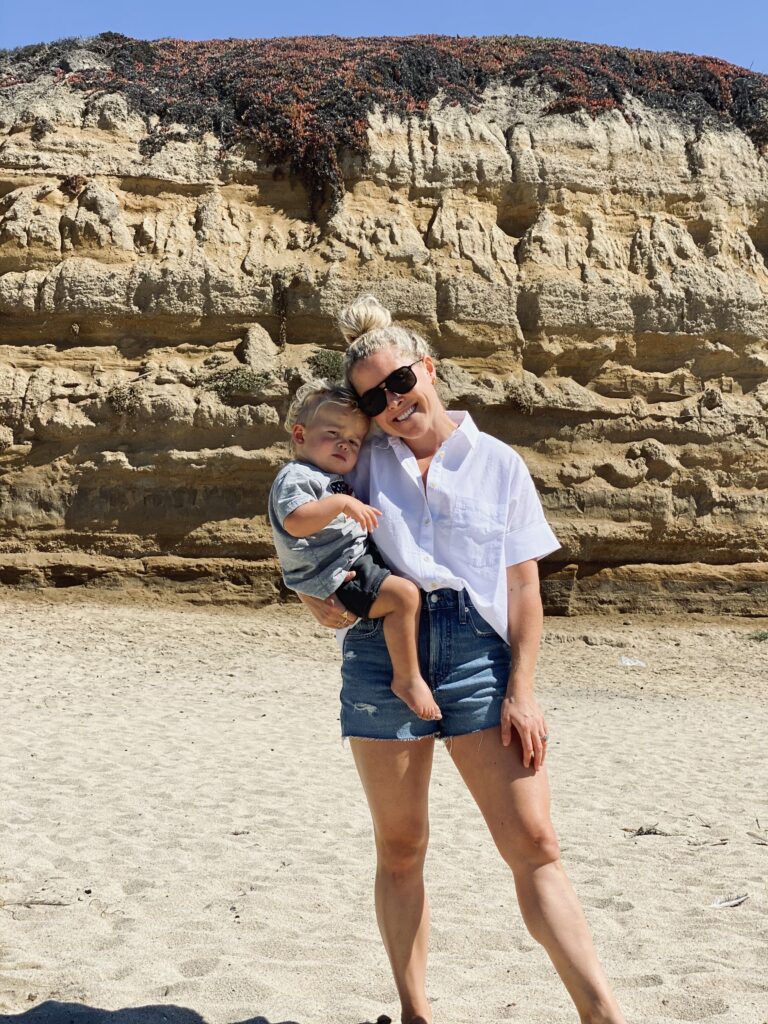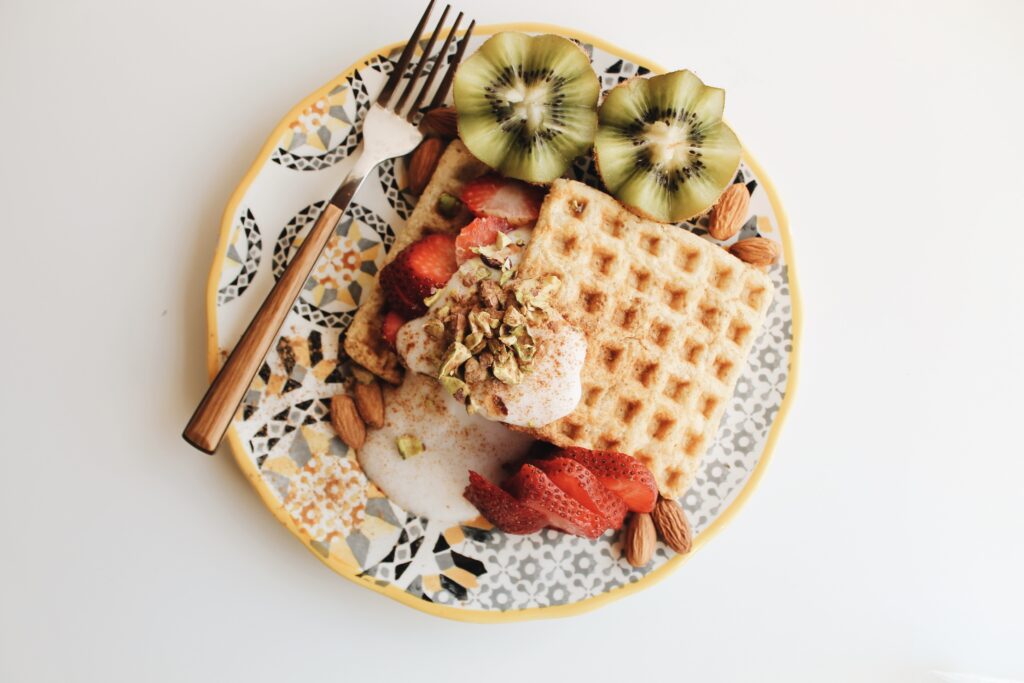Day one of your cycle begins. You anticipate the usual: period cramps, mood swings, and sugar cravings. The thought of a pain-free period seems impossible, right? Not so fast. All you need to do is get in sync with your hormones. Through every stage of life, hormones play a role. They regulate everything from development to our sex drive and metabolism. Although powerful, they’re equally sensitive. Lifestyle and diet can quickly throw hormones out of balance. Hello, period bloat, crippling cramps, and tender breasts. If these sound familiar, you may have an underlying hormone imbalance. Luckily, you can hack your way to a better period. In today’s article, we’re digging into a beautiful concept called cycling syncing. Armed with the tools and knowledge, cycle syncing for hormone balance could change your life.

Menstrual cycle refresher
Each month—during the years between puberty and menopause—a woman’s body goes through a number of changes. In essence, to get ready for a possible pregnancy. This series of hormone-driven events = the menstrual cycle. During each menstrual cycle, an egg develops and is released from the ovaries. The lining of the uterus builds up. If a pregnancy doesn’t happen, the uterine lining sheds during a menstrual period. Thus, the cycle starts again. The length of each phase can differ from woman to woman, and it can change over time. Just like the seasons, a woman’s menstrual cycle has four distinct phases: menstrual, follicular, ovulatory, and luteal.
• menstrual: the start of your period
• follicular: 7-10 days leading up to ovulation
• ovulatory: 3-5 days of ovulation
• luteal: 10-14 days before your period
Keep in mind that every woman’s cycle is different, and it is normal for lengths to vary. Your cycle may be longer or shorter than the phases listed above.

Balancing your HORMONES, NATURALLY
Before we dive into the specifics of cycle syncing, let’s talk about how to balance hormones. Generally speaking, you want to focus on an anti-inflammatory, nutrient-dense diet. You want to remove endocrine disruptors from your home and inflammatory oils from your pantry. Incorporate stress relief habits, and take the necessary steps to get your gut health on track. If you’re feeling overwhelmed, start small. Begin by getting blood work done. A hormone panel will give you insight into specific supplements for hormonal imbalance. Next, consider your diet. Swap refined carbs for sweet potatoes, 100% whole grains, and quinoa. The following week, commit to moving your body for 20 minutes every day (yes, walking counts!). The week after, begin a daily meditation practice. One step at a time.
What is cycle Syncing?
In a nutshell, cycle syncing is this: you adjust your diet and exercise routine (and even your social calendar!) to fit the phases of your menstrual cycle. In turn, this supports your hormones and optimizes both your overall health. Once you determine what phase you’re in, you can begin cycle syncing. I love using the Flo app! Ultimately, the idea behind cycle syncing is to work in tandem with your body—work with your flow—not against it. By doing this, you set yourself up to achieve your health goals: sustained energy, better moods, reduced period problems, improved body composition, and more. All of this is possible through cycle syncing for hormone balance.

Menstrual Phase
This is the start of your period. The lining of the uterus is shedding. Hormones are at an all-time low at the beginning of your cycle. Your body is losing blood and iron. Prostaglandins (which cause cramping) are peaking. You probably feel more inward, slow, and restful here. In terms of cycle syncing for hormone balance during your period, the aim is to truly nurture your body.
Foods to focus on: Focus on nourishing, warming foods that build iron, assist in iron absorption, and are anti-inflammatory to fight cramps. Beef, fish, and poultry (liver is also a fantastic source!) are great. In terms of spices and herbs, think: turmeric, ginger, cinnamon, cayenne, cardamom, cumin, garlic, parsley, and curry. Load up on a variety of plant foods: spinach, chard, kale, collard greens, broccoli, mushrooms, beets bell peppers, lentils, pinto beans, kidney beans, chickpeas, citrus fruits, strawberries, cherries, pineapple, mango, papaya.
Hydration: You’ll likely drink the most water compared to the rest of your month here as you are losing hydration when you’re bleeding. Opt for non-caffeinated teas, sparkling water, and herb-infused wter.
Exercise: Slow, rejuvenating exercise like walking, pilates, and yin yoga is great here. Otherwise, take a couple of days to rest and rejuvenate.

Follicular phase
Your hormone levels are starting to rise. Energy begins to pick up, and you’ll feel more confident and social. Estrogen is an anabolic hormone (meaning it helps things grow), so we are at our strongest during this phase. Some women experience a little fluid retention around ovulation, as well as mild constipation, crampiness, or nausea.
Foods to focus on: Vitamin B-rich foods (100% whole grains, meat, eggs, dairy, nuts and seeds) support the follicular phase. Protein and cruciferous veggies (broccoli, cauliflower, cabbage, etc.) are important during this time as they support estrogen detoxification. Foods high in vitamin E—such as sweet potatoes, olives, olive oil, green leafy veggies, and nuts and seeds nourish growing follicles. We are also more insulin sensitive, so our bodies can tolerate more carbohydrates, particularly if you’re increasing your strength training.
Exercise: Heavy weights, HIIT, high volume and more intense workouts are ideal.
Ovulation
Around days 11-14 of your cycle (during the follicular phase), you’ll likely ovulate. Estrogen peaks, and most women feel vibrant and sensual. Libido peaks around ovulation, too! Cervical fluid changes. It’s possible to experience some fluid retention around ovulation, as well as mild constipation, crampiness, or nausea.
Foods to focus on: Along with other foods that support the follicular phase, opt for fiber-rich foods and plenty of water to reduce fluid retention. Parsley, celery, and green tea can help. Foods rich in B-vitamins help a woman’s body release an egg—leafy greens, wild-caught salmon, eggs, legumes, and grass-fed beef.
Exercise: Increase your cardio or hit the weights!

Luteal PHase
Progesterone is on the rise. This is our fat-burning, temperature-regulating, pro-gestational hormone. Towards the end of this phase, PMS symptoms may begin. You may start to feel a little more introverted, and this is because estrogen is declining. And with it, serotonin levels drop. Progesterone increases during the luteal phase, which impacts our metabolism. Typically, hunger levels go up and we tend to crave salty, carb-rich foods.
Foods to focus on: Up your hormone-loving fats! Sunflower seeds and tahini (more on this, below) are helpful as they help with estrogen detox. Magnesium-rich foods, such as spinach, dark chocolate, legumes, avocado, banana, raspberries, wild-caught salmon, and tuna help alleviate PMS. Hunger levels are typically quite high during this phase. It’s normal to crave more food! Reach for an extra snack to nourish your hard-working body.
Exercise: Consider this your de-load week. Aim for higher volume / reps and lower weights, rather than heavy strength training. As energy levels decline, reduce exercise intensity and switch to relaxing movements like walking, yoga and pilates.

SEED CYCLING TO REGULATE YOUR MENSTRUAL CYCLE
When it comes to cycle syncing for hormone balance, seed cycling is worth a shot. It’s known to balance hormones, boost fertility, and ease symptoms of menopause. It involves eating various seeds at different times of the month. Theoretically, seed cycling either enhances or inhibits the production of estrogen and progesterone in the body. In turn, it balances and optimizes your hormones, relieving typical PMS symptoms. The easiest way to seed cycle? Via Funk It Wellness. They do all the hard work for you. No need to buy seeds and grind them at home! Plus, I have a discount for you: use ‘EDIE15’ at checkout to save money on your seeds. I’ve been using these seeds for over six months and have absolutely noticed a difference.
THE FOLLICULAR PHASE
When: Days 1-14 of your cycle. During this phase, you need a balanced amount of estrogen to build the uterine lining.
What Seeds: Pumpkin and flax.
PUMPKIN SEEDS are rich in zinc, which aids in progesterone production and supports healthy testosterone levels. They’re also rich in antioxidants, which help protect your ovaries, eggs, and reproductive system as a whole.
FLAX SEEDS contain lignans, which aid in estrogen release, meaning they bind excess estrogen and help eliminate it to support ideal estrogen levels. Both flax and pumpkin seeds are rich in omega-3 fats, which encourage uterine blood flow and maintain healthy cell membranes.
THE LUTEAL PHASE
When: Days 15-28 of your cycle. During this phase, the corpus luteum starts to release progesterone. This sex hormone helps thicken the uterine lining and prepare it for implantation.
What Seeds: Sesame and sunflower.
SESAME SEEDS are rich in zinc, which aids in progesterone production. They also contain lignans, which help block excess estrogen, and they have a slew of other benefits, including the ability to lower inflammation.
SUNFLOWER SEEDS contain selenium, which helps improve liver function and remove excess estrogen. They also contain vitamin E, which stimulates progesterone production.
This article is for informational purposes only. It is not, nor is it intended to be, a substitute for professional medical advice, diagnosis, or treatment and we recommend that you always consult with your healthcare provider.



Leave a Reply